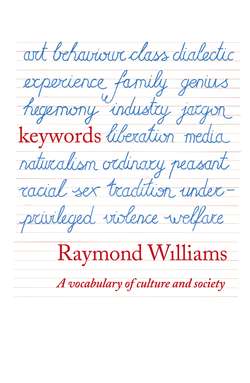Читать книгу Keywords: A Vocabulary of Culture and Society - Raymond Williams - Страница 30
COMMUNICATION
ОглавлениеCommunication in its most general modern meaning has been in the language since C15. Its fw is communicacion, oF, from communicationem, L, a noun of action from the stem of the past participle of communicare, L, from rw communis, L – common: hence communicate – make common to many, impart. Communication was first this action, and then, from lC15, the object thus made common: a communication. This has remained its main range of use. But from lC17 there was an important extension to the means of communication, specifically in such phrases as lines of communication. In the main period of development of roads, canals and railways, communications was often the abstract general term for these physical facilities. It was in C20, with the development of other means of passing information and maintaining social contact, that communications came also and perhaps predominantly to refer to such MEDIA (q.v.) as the press and broadcasting, though this use (which is earlier in USA than in UK) is not settled before mC20. The communications industry, as it is now called, is thus usually distinguished from the transport industry: communications for information and ideas, in print and broadcasting; transport for the physical carriage of people and goods.
In controversy about communications systems and communication theory it is often useful to recall the unresolved range of the original noun of action, represented at its extremes by transmit, a one-way process, and share (cf. communion and especially communicant), a common or mutual process. The intermediate senses – make common to many, and impart – can be read in either direction, and the choice of direction is often crucial. Hence the attempt to generalize the distinction in such contrasted phrases as manipulative communication(s) and participatory communication(s).
See COMMON
